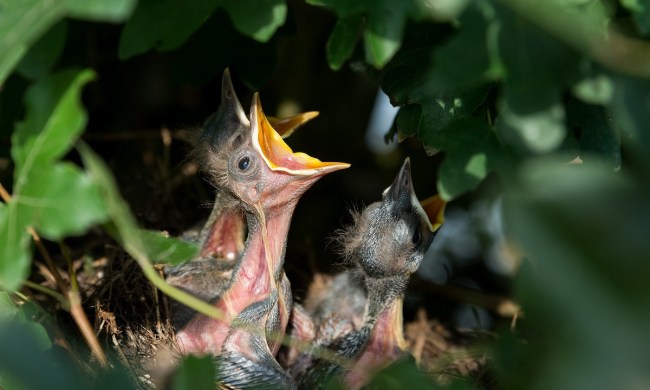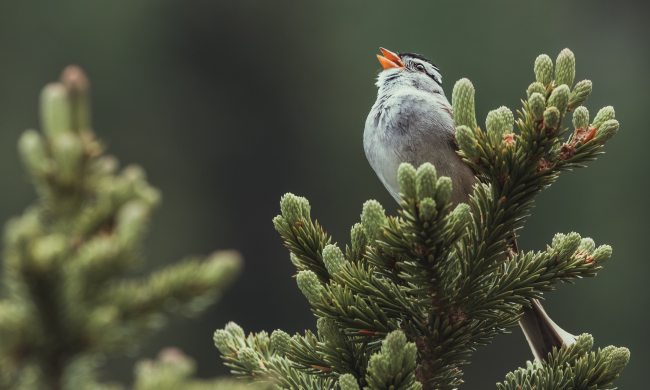Forget cat videos. Birds on social media have taken the internet by storm — from chatty yet charming macaws to stunning but adorable bee-eaters. No matter what type of birds you’re looking for, you can dive into endless accounts of mesmerizing photos or take a scroll through a few of the Instagram hashtags that will update you with the best bird pics of the day. We promise you won’t even notice the time has slipped away from you. Check out these seven amazing photographers on Instagram for the best bird captures out there.
@gourmetbiologist
Focusing on tropical research and birding, Sean Graesser brings you the best and brightest birds, literally. These spectacular photos showcase some of the most colorful and exotic species on the planet. He likes to zoom in close on each subject, displaying the key features of every bird and bringing a completely new perspective to the genre. You’ve never seen bird photos like this before.
@terjekolaasphotos
These birds rarely show off even a patch of color — they need to blend into their snowy landscapes. Terje Kolaas highlights the elegant birds of Norway who’ve adapted to survive some of the harshest climates. You can discover here many birds you’ve never even seen and the beauty that comes from camouflage rather than exhibitionism. Kolaas also perfectly encapsulates each type of bird by frequently catching them in motion, telling their story.
@the_peck_deck
Emily spotlights the birds in her own Western Michigan backyard, which she calls The Peck Deck. While she features fewer international birds, you’ll be surprised by the variety and colorfulness of these shots. Every bird on this account tells you clearly that he wants you to admire him. Why wouldn’t you? He’s the most handsome specimen on Insta (according to him, at least). Her inspiration encourages us all to revisit our own space to see which birds we might glimpse.
@micheldoultremont
You can’t miss the artistry in this incredible spread of carefully curated nature photos. This account doesn’t capture just birds but the entire scope of fauna around the world, including frogs, foxes, and fish. Michel likes to step back and post about everyday animals as well, such as pigeons, to remind us that there’s beauty in all these creatures — especially the way he shoots them.
@melissagroo
As a wildlife conservation photographer, Melissa Groo has her camera and her eye on bird species across the globe, many of whom face destruction of habitat and other life-threatening challenges. You’ll find more than just flying beauties on this account, but we promise a seemingly endless supply of gorgeous bird photos, taking in avians in their natural domain. As a Smithsonian and National Geographic contributor, she travels around the world; her pictures make you feel you’re right along with her for the ride.
@jason_tiesman_birdphotography
Jason Tiesman, an up-and-coming bird lensman, locks in time the intense gaze of shockingly colorful birds. Each individual shows off his personality in these remarkable portraits of some of the world’s most exquisite inhabitants. You can’t mistake that gleam in their eyes: These birds know they’re stars. Jason keeps you posted on his travel schedule, so you can get excited for what’s on the way and look forward to gazing upon unfamiliar species. We can’t wait to see what birditude he’ll find for us next.
@mikullashbee
Mike Ashbee finishes the list because he understands the humor of birds. Both his captions and the poses he immortalizes bring out another side of these graceful creatures. No matter how polished they think they look, everyone gets a goofy face sometimes. Despite the laughs, you’ll be entranced by the splendor and color of the birds on his account. (When you’re not giggling.)
Looking for more birds on Instagram? Check out these combo accounts that feature some of the best of these photographers and many more. Two great places to start are @audubonsociety and @best_birds_of_ig, but there’s a lot more where they came from. Once you’ve been inspired, try your hand at it and take your camera or phone to the yard for some bird pics. Don’t worry if they don’t turn out Insta-ready the first time. It takes practice (and the right lens) to get the perfect bird shot.



